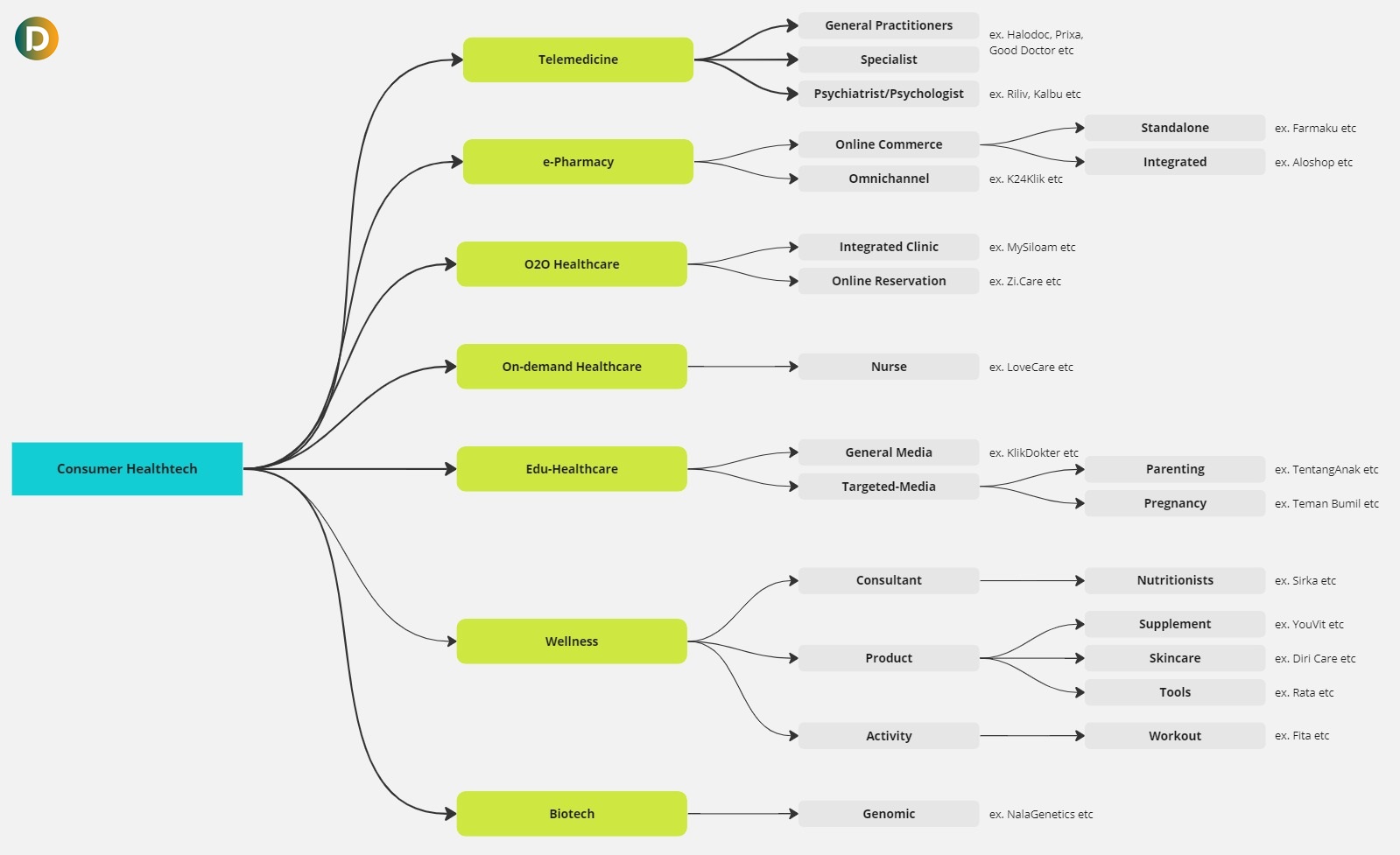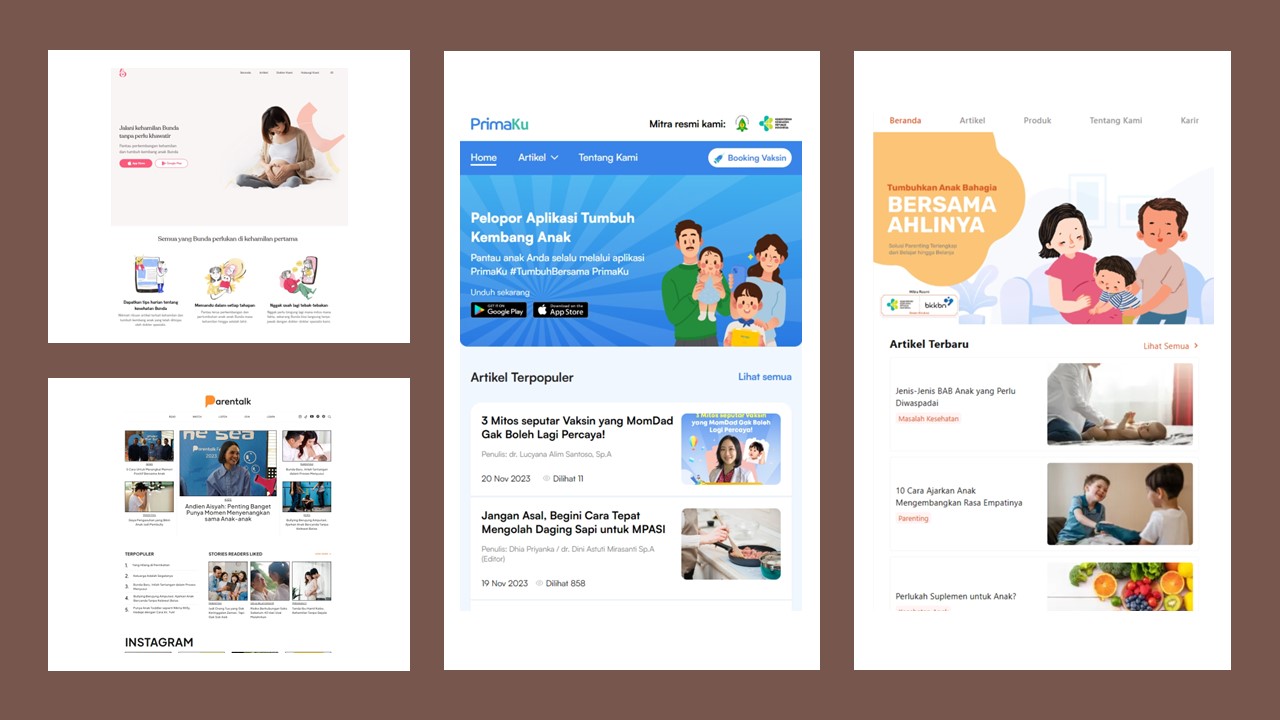Map of Consumer Healthtech Services in Indonesia
Dissecting the types of digital health services for consumers that currently exist in the Indonesian market
Startups healthtech has given a new color to the Indonesian health industry. They offer various services that help people access various health services through an application system. Telemedicine could be said to be one of the most popular, but as it develops, there are currently various types of products and services healthtech consumers that can be utilized by society.
In this article, DailySocial.id trying to dissect about service healthtech consumers currently operating in Indonesia, while exploring the potential for each service.

Telemedicine
It becomes a service healthtech quite popular consumer in Indonesia. The sub-category of services has also begun to expand, not only to general practitioner consultation services, but also to specialist doctors, nutritionists, and even psychologists.
Globally, the telemedicine market size is expected to reached $106 billion this year. After being pushed hard during the pandemic, demand for medical consultation services online continues to move exponentially upwards.
Based on our analysis, there are a number of factors that make telemedicine increasingly popular. First, the increasing depth of telemedicine services, especially in the area of mental health and care (dental, skin, nutrition, etc.). As well as the application of increasingly superior technology in the application system itself, which has a direct impact on cost efficiency from the side of consumers and health service providers.
Second, openness of government regulations towards health innovation in Indonesia, accompanied by optimal educational efforts by the public stakeholder, especially when there were social restrictions due to the Covid-19 pandemic several years ago. Third, integration between systems is increasingly open --- this is proven by various applications (such as insurance and hospitals) which are starting to integrate telemedicine systems within them, even including a number of consumer applications such as ride hailing.
e-Pharmacy
Menurut McKinsey, telemedicine and e-pharmacy sectors are the two main drivers healthtech in the Asian region. This is proven by key players in each country significantly increasing penetration in these two types of services, as is being done Halodoc and Alodokter in Indonesia, MyDoc in Singapore, Viettel and Doctor Anywhere in Vietnam, to DoctorOnCall in Malaysia.
In Indonesia itself, since 2020 e-pharmacy has received a share of 3% of the total national pharmaceutical industry, whose value has reached $6 billion. This service improvement will also have direct implications for the integration between systems that is currently starting to be built --- such as doctor's prescriptions obtained from telemedicine that can be ordered directly online. in-app to e-pharmacies in certain applications.

On the other hand, the e-pharmacy model is also starting to be applied by traditional pharmacy businesses to capture opportunities from the new generation market. This is like what is done by the K-24 pharmacy network which operates a delivery service via website and application, in collaboration with the motorbike taxi couriers provided. ride hailing local.
Industry players also believe, E-commerce which has been proven to produce efficiency in the process supply chain leaders It will also have an impact on medicinal commodities sold through e-pharmacies. However, strict supervision of business processes is needed to avoid the distribution of medicines that require a recommendation from a doctor.
O2O Healthcare
According to data from the Ministry of Health as of 2018, there are around 2.813 hospitals spread throughout Indonesia, serving 265 million people. Various improvement efforts continue to be made to produce an optimal service system, one of which is digitalization. Currently a number of platforms healthtech has also collaborated with health institutions to connect its services, to deliver experiences online-to-offline (O2O).
Features such as ordering queue numbers directly online and digitizing medical records is one of the innovations that has emerged, both in applications healthtech third parties, applications official hospital property, BPJS application, and so on. This service expansion is also supported by SaaS services specifically for hospitals and clinics which are now being marketed by technology innovators, thus providing special readiness on the system side. backend from his health care provider.
This model is also used by a number of clinics (especially dental and beauty) to provide a better customer experience. Startups such as Rata and Nusantics utilize this model to combine services online and offline to meet directly with the medical team at the clinic --- the workflow has been adapted to each application.
On-Demand Healthcare
Basically with service on-demand This means that people can order services related to medical nursing according to their needs. The range of services includes health care for the elderly. Currently there are a number of local players in this area, including LoveCare, My Nurse, MHomecare, and several others. Finding the right nurse is a challenge for some people, considering limited access to existing resources.
Based on data from the Ministry of Health at the beginning of this year, there were around 1,26 million health workers in Indonesia, of which 524.508 were nurses. However, the uneven distribution of nurses has the potential to cause inequality in health services in a number of regions in the country. Nurses are mostly focused on providing services in health institutions, so it is difficult to get their services for more personal needs.
Services on-demand healthcare It is also hoped that they can carry out the vision to improve the welfare of nurses by providing alternative employment opportunities according to their respective specific fields.
Edu-Healthcare
This service focuses on educating the public about health through the platform online media. They come in various forms, most of which are currently packaged in intuitive and interactive application services. Edu-Healthcare – apart from offering general health information – has also evolved into certain sub-segments, for example focusing on child development education, mental health, or parenting.

Quoting a journal published by Wira Iqbal, Aria Gusti, Dicki Kurnia Pratama, and Rahma Wahyuni from Andalas University, the results of a survey conducted among 110 Puskesmas visitors found that only 20% of respondents had good health literacy, the rest were still relatively low. Although this research does not describe Indonesian society as a whole, it can provide the view that in many circles knowledge about health still needs to be seriously improved.
Digital media is considered to be an efficient channel to become a bridge to this knowledge. Especially if you want to target the younger generation who currently dominates society - related to the demographic bonus.
Wellness:
More Coverage:
According to the results of a survey conducted Katadata and Zurich, the Covid-19 pandemic has increased public awareness of healthy lifestyles. For example, 51,69% of respondents increased their consumption of multivitamins, 47,6% became more enthusiastic about exercising, and 64,20% allocated funds for better sanitation products. This trend has a direct impact on industrial players in the sector wellness.
In general, from those that already exist in Indonesia, startups wellness offers many services in the form of fitness activities, health consultations and nutritional products. Digital channels are empowered to connect with end consumers and educational mediums on-demand (telemedicine, instructional videos, and others).
According to the data collected The report of Statista for the Indonesian market, revenue which services can potentially be obtained wellness digital in the fitness category will reach $741,3 million this year. Meanwhile, health and nutrition consultation services were estimated at $120,7 in the same period.
Biotech
Biotech has various branches of science, one that is gaining popularity is genomics. This is related to testing human DNA to find potential for better health treatments. Biotech services focuses on preventive healthcare by uncovering unique things about a person's DNA. This can detect the potential risk of serious illness and the type of drug that can be absorbed well.
In Asia Pacific, genomics industry has posted a market capitalization of $3,62 billion as of 2022 and is projected to grow to $5,97 billion in 2027.
Not many players have entered this industry, but in Indonesia there are already several, including NalaGenetics and Asa Ren. It requires huge costs and long research to carry out R&D. Now these two players have debuted the service, allowing anyone to carry out a genome test at a fairly affordable cost.
Sign up for our
newsletter
 Premium
Premium
